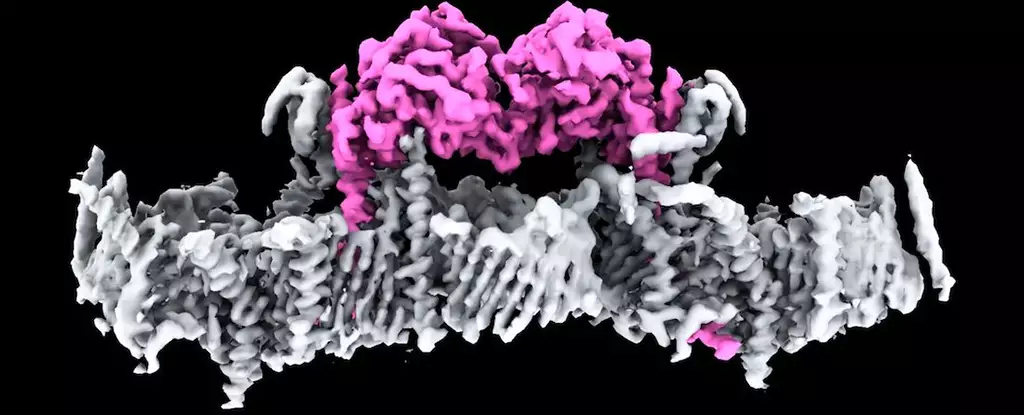Recent strides in Parkinson’s disease research herald a new era of understanding, particularly surrounding the mitochondrial protein PTEN-induced putative kinase 1 (PINK1). For over twenty years, the connection between mutations in the PINK1 gene and the early onset of Parkinson’s disease has been established, yet the intricate mechanisms underlying this relationship remained largely elusive. Thanks to groundbreaking work performed by the team at the Walter and Eliza Hall Institute of Medical Research (WEHI) in Australia, we are now gaining unprecedented insights into how PINK1 functions — and malfunctioning — can lead to this debilitating disease.
Using cutting-edge imaging technologies such as cryo-electron microscopy and mass spectrometry, the researchers have not only visualized the structure of PINK1 but have also elucidated its active role in mitochondrial regulation. This is pivotal in the ongoing battle against Parkinson’s, as understanding PINK1’s specific functions is tantamount to unlocking potential therapeutic avenues.
The Functional Landscape of Mitochondria
Mitochondria, often regarded as the powerhouses of the cell, require diligent maintenance to sustain their energy-intensive operations, especially in neurons, which are particularly vulnerable to energy deficits. Here’s where PINK1 comes into play. Under normal circumstances, this protein operates without a hitch, traversing both the outer and inner membranes of mitochondria. However, when these cellular powerhouses begin to malfunction, PINK1 becomes engaged in a critical signaling pathway, tagging dysfunctional mitochondria for degradation using ubiquitin, a signaling molecule crucial for cellular repair mechanisms.
The ability of PINK1 to act as a guardian of mitochondrial health is emphasized through the recent findings from WEHI. The defining complexity of these molecular interactions extends beyond mere structure; it reveals that PINK1 relies heavily on a specialized protein complex known as TOM-VDAC to anchor securely to damaged mitochondria. Discovering these interactions provides valuable insight into the cellular death toll that cripples neurons in Parkinson’s patients and will consequently shape future treatment strategies.
The Promise of Therapeutic Advances
Scientists like David Komander, who leads this research initiative, have expressed a renewed sense of optimism regarding the development of therapies targeting mitochondrial dysfunction. They emphasize the significance of their findings in creating avenues for quick therapeutic interventions. As treatments aimed at enhancing PINK1 function continue to be explored, one can only hope to witness monumental strides in slowing down or even preventing Parkinson’s progression.
Such promising revelations serve not only the scientific community but also embody hope for millions of individuals living with Parkinson’s disease. The idea that we may soon engage in a race against time to restore the functionality of PINK1 opens new doors to potentially life-changing treatments, a reality that seemed almost distant only a few years ago.
Mapping the Path Forward
Nevertheless, it’s important to note that Parkinson’s disease is a multifaceted condition influenced by numerous biological pathways beyond PINK1. As our understanding of PINK1 deepens, it’s crucial that research continues to investigate the interactions between different proteins and the shared mechanisms that contribute to neurodegenerative disorders. As the research community rallies to dissect the biological complexity of diseases like Parkinson’s, a holistic approach will be necessary to unravel how various factors intertwine to exacerbate this challenge.
This robust research not only spotlights the need for an individualized approach to treatment but also encourages interdisciplinary collaborations that can tackle the nuances of the disease. The roadmap to eradicate the impacts of Parkinson’s is littered with challenges, but as innovative projects continue to thrive, hope does not wane.
In essence, the revelation of PINK1’s structure and its operational link to mitochondria does more than offer a glimmer of hope; it serves as a powerful reminder of the resilience of scientific inquiry. Armed with this knowledge, we face a potent opportunity to not just dream of a cure for Parkinson’s but to work diligently toward making that dream a reality. As we progress, the focus will remain firmly on tapping into these insights to foster breakthroughs that hold the promise of a brighter, healthier future for those affected by Parkinson’s disease.

